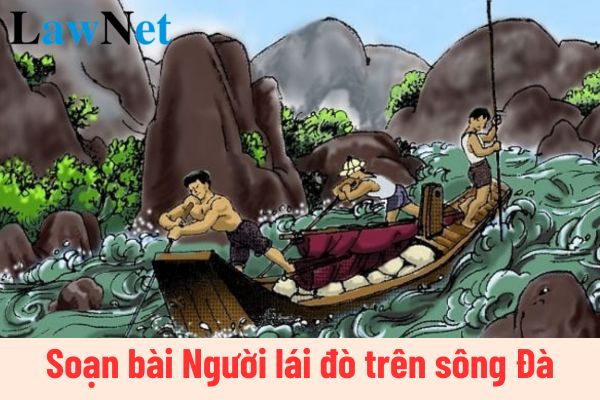Vietnam: What are the guidelines for preparing the lesson "Người lái đò trên sông Đà"? What are the academic topics in the 12th-grade Literature curriculum?
What are the guidelines for preparing the lesson "Người lái đò trên sông Đà"?
"Người lái đò trên sông Đà" by Nguyen Tuan is a remarkable literary work that not only describes the majestic beauty of Northwestern nature but also contains profound meanings about life, people, and the confrontation between humans and nature.
Students can refer to the following guidelines for preparing the lesson "Người lái đò trên sông Đà":
|
Guidelines for preparing the lesson "Người lái đò trên sông Đà"
|
Note: Information about guidelines for preparing the lesson "Người lái đò trên sông Đà" is for reference only./.

What are the guidelines for preparing the lesson "Người lái đò trên sông Đà"? What are the academic topics in the 12th-grade Literature curriculum? (Image from the Internet)
What are the academic topics in the 12th-grade Literature curriculum in Vietnam?
Under Section V of the General Education Program for Literature issued with Circular 32/2018/TT-BGDDT, the academic topics in the 12th-grade Literature curriculum in Vietnam are as follows:
Topic 12.1. RESEARCH AND WRITE A REPORT ON A MODERN AND POST-MODERN LITERARY MATTER
- Understand the requirements and methods for researching a matter.
- Be able to write a research report.
- Understand and apply some knowledge from the topic to comprehend and write about modern and post-modern literature.
- Be able to present a modern, post-modern literary matter that has been examined.
Content:
-
Requirements and methods for researching an issue
-
How to write a research report
-
Issues that can be researched in modern and postmodern literature
-
How to read modern and postmodern literary texts
-
Presentation requirements for an issue of modern and postmodern literature
Topic 12.2. UNDERSTAND A LITERARY WORK ADAPTED INTO AN ARTWORK
- Understand what a literary adaptation is.
- Learn how to explore, introduce, and present an artwork adapted from literature.
- State the idea and method of adapting a literary work.
Content:
-
Literary work and adaptation of literary work
-
Some basic differences between a literary work and an adapted work
-
How to adapt a literary work into a film, painting, music,...
Topic 12.3. UNDERSTAND THE CREATIVE STYLE OF A LITERARY SCHOOL: CLASSICAL, REALISTIC, OR ROMANTIC
- Recognize the creative style of a literary school (movement) through some basic characteristics.
- Understand the requirements and methods for exploring a literary school’s creative style.
- Be able to write an article introducing the creative style of a literary school.
- Apply the knowledge from the topic to explore some creative styles of other literary schools.
- Be able to present the creative style of a literary school.
Content:
-
Creative style of a literary school: some basic characteristics
-
How to explore the style of a literary school
-
How to write an introduction about the creative style of a literary school
-
Practice exploring some styles of a literary school
-
Presentation requirements for the creative style of a literary school
What are the orientations in writing teaching methods for Literature in Vietnam?
Under Section 6 of the Appendix of the General Education Program for Literature issued in conjunction with Circular 32/2018/TT-BGDDT on the teaching methods for Literature:
- Writing teaching methods
The purpose of teaching writing is to train thinking and writing skills, thereby educating qualities and developing students' personalities. Thus, when teaching writing, teachers focus on the requirement to generate ideas and know how to present ideas coherently, creatively, and persuasively.
Teachers focus on guiding students through the steps of composing texts and practicing writing according to the steps and characteristics of text styles. Through practice, teachers guide students to analyze texts in the reading comprehension and supplementary texts to grasp the characteristics of text styles, and the procedure of text composition; use questions to help students determine the purpose and content of writing; introduce resources, guiding how to find ideas and outline drafts; guiding students in writing texts; self-editing and exchanging based on writing evaluation criteria.
At the primary level, teaching writing has two requirements: teaching writing techniques and teaching to write paragraphs and texts. Teaching writing techniques (practice writing, spelling) primarily employs the model practice method. Teaching to write paragraphs, and essays flexibly can use methods such as practicing according to models, questioning, group discussion, creative writing,...
At the lower and upper secondary levels, teachers require students to undertake more complex tasks such as gathering information for writing from various sources (printed materials, online materials, interviews, collecting data from reality); discussing, and analyzing writing evaluation criteria; knowing how to self-edit, exchange in groups to complete writing and learn from each writing experience. At these two levels, in addition to continuing the analysis of text types, teachers focus on guiding active writing techniques to help students master skills for each type of text creation and develop critical thinking, problem-solving abilities, and creativity in writing. Besides regular texts, students are also trained to create digital and multimodal texts.
Teachers use methods such as sample analysis, posing questions, problem-posing, suggestion, etc., to guide students in forming outlines, choosing deployment and expression methods; organize student practice in writing, possibly in parts: introductions, conclusions, or several paragraphs within the main body.
Organizing writing teaching for paragraphs and essays typically includes activities such as: task assignment to students; individual, pair, or group work; organizing the presentation of results, discussing assigned tasks, and drawing conclusions from lessons; evaluation and feedback,...; after writing, students should have opportunities to discuss and present what they have written.

